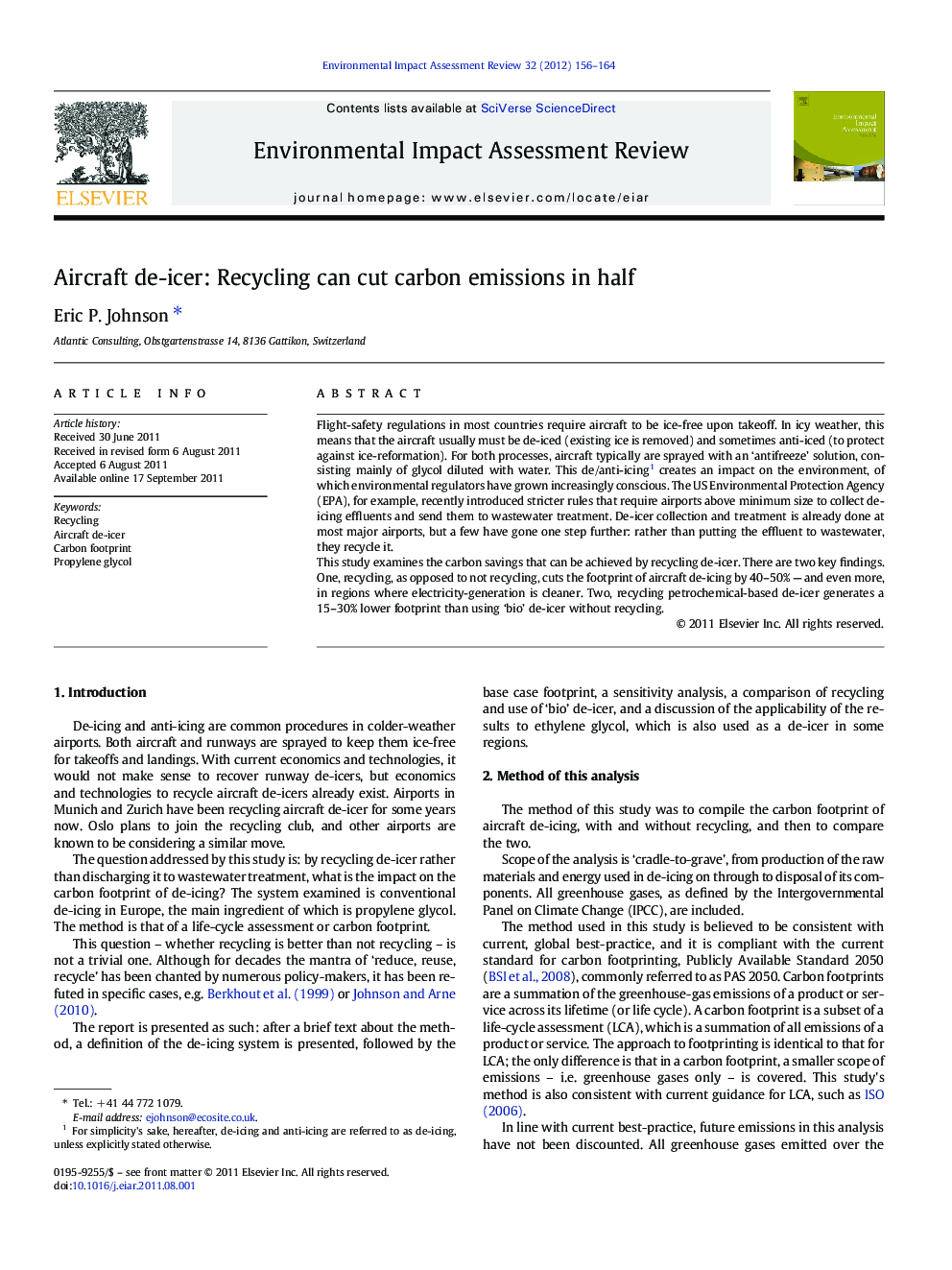| کد مقاله | کد نشریه | سال انتشار | مقاله انگلیسی | نسخه تمام متن |
|---|---|---|---|---|
| 1052950 | 946513 | 2012 | 9 صفحه PDF | دانلود رایگان |

Flight-safety regulations in most countries require aircraft to be ice-free upon takeoff. In icy weather, this means that the aircraft usually must be de-iced (existing ice is removed) and sometimes anti-iced (to protect against ice-reformation). For both processes, aircraft typically are sprayed with an ‘antifreeze’ solution, consisting mainly of glycol diluted with water. This de/anti-icing1 creates an impact on the environment, of which environmental regulators have grown increasingly conscious. The US Environmental Protection Agency (EPA), for example, recently introduced stricter rules that require airports above minimum size to collect de-icing effluents and send them to wastewater treatment. De-icer collection and treatment is already done at most major airports, but a few have gone one step further: rather than putting the effluent to wastewater, they recycle it.This study examines the carbon savings that can be achieved by recycling de-icer. There are two key findings. One, recycling, as opposed to not recycling, cuts the footprint of aircraft de-icing by 40–50% — and even more, in regions where electricity-generation is cleaner. Two, recycling petrochemical-based de-icer generates a 15–30% lower footprint than using ‘bio’ de-icer without recycling.
► Carbon footprint of aircraft de-icing can be measured.
► Recycling aircraft de-icer cuts the footprint of aircraft de-icing by 40–50%.
► Recycling ‘fossil’ de-icer is lower carbon than not recycling ‘bio’ de-icer.
Journal: Environmental Impact Assessment Review - Volume 32, Issue 1, January 2012, Pages 156–164